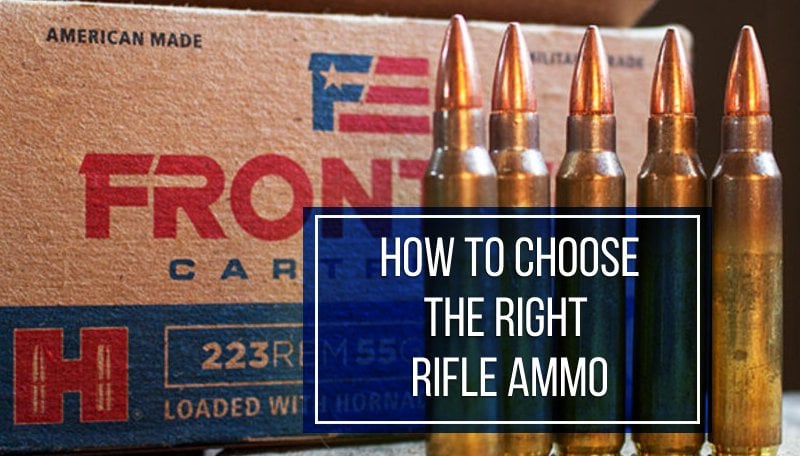
There is a saying that a firearm is only as good as the ammo you put in it. While this has always been a dance for two, and ammo itself carries even less value than a firearm, this saying highlights the importance of ammunition quality. Just like a car can only go as fast as its engine will take it, a rifle can only shoot as accurately and powerfully as its ammunition allows. You might say that the comparison with the rifle’s action would have been more appropriate, but we only used it to bolster the importance of ammunition. A car can’t run without gas, but ammo is so much more than mere fuel. That’s why it’s important to choose your rifle ammo carefully, taking into account many different factors that influence its performance. In this article, we’ll explore the primary factors that affect ammo performance so that all your rifle and pistol ammo buying decisions may be informed.
Table of Contents

What is Caliber and Why is It Important?
When choosing ammo, caliber is the first thing that should be taken into consideration. Caliber refers to the diameter of a bullet and its associated cartridge case, which measure the relative size of different types of ammunition. With very few examples, ammunition meant for one caliber won’t fit any other, so this is the first number you should pay attention to. The attempt to squeeze a round into an evidently not-big-enough chamber or letting rounds sit loosely in a chamber too spacious is bound to cause trouble. However big the discount, however tempting the deal – only purchase ammunition that fits your caliber.
Now about those few exceptions. Some rifle cartridges can be used interchangeably. Among rimfire calibers, the .22 LR is the most versatile, capable of shooting .22 Long, .22 Short, and .22 CB cartridges. Rimfire rifles are quite popular, with Ruger 10/22 being only one of the renowned representatives of this family. Though .22 LR ammo is considered the cheapest on the market, you can use the abovementioned ammunition without fear, should it find its way into your hands.
As for centerfire calibers, the options are as follows. A rifle chambered in .357 Magnum can fire .38 Special, but not vice versa. Seriously, that interchangeability thing is always a one-lane road, with some calibers being capable of shooting cartridges they were based on. In the same way, the 5.56mm NATO can shoot .223 Remington cartridges, the .44 Magnum rifles can utilize .44 Special rounds and the .308 Winchester rifles are compatible with 7.62mm NATO ammo. The opposite is not true for any of these calibers.
Cartridge Characteristics
Underestimating the influence a cartridge has on your accuracy is a common oversight. You might see the same rifle used by the same shooter in the same conditions showing different performance. The difference in ammo performance can lie in technical characteristics and those should be taken into consideration while choosing ammunition. Bullet weight and muzzle velocity are most worthy of your attention, as they affect the amount of energy delivered by a bullet and how it behaves once it leaves the barrel.
Bullet Weight & Velocity
For starters, bullet weight is measured in grains, with one grain equaling 1/7000th of a pound. Lighter bullets typically range from 115 to 130 grains, while heavier bullets can weigh as much as 147 grains or more.
Light bullets, due to their lower mass, can achieve higher speeds (velocity) when fired from a gun. This high speed can lead to a flatter trajectory, meaning the bullet doesn’t drop as much over distance, making it easier to hit targets at longer ranges. However, light bullets may lack the “stopping power” of heavier bullets, as they carry less momentum.
Heavy bullets, while being slower, carry more momentum. Because of this, they can deliver more energy upon impact, which can result in greater damage. Heavy bullets also tend to perform better in windy conditions, as they’re less affected by wind drift.
However, it’s worth noting that advancements in bullet design and technology can allow light bullets to achieve the same level of impact as heavier ones. For example, by using high-quality materials and more powerful powder loads, manufacturers can create light bullets that expand or fragment upon impact, delivering a level of energy and damage comparable to that of heavier bullets.
Now, muzzle velocity is the speed of the bullet as it leaves the barrel of the firearm. It’s a key determinant of ammo performance that affects its trajectory, energy, and ultimately, its effectiveness. Two bullets with the same muzzle velocity can indeed perform differently due to differences in bullet weight. A lighter bullet, despite having the same initial speed, will slow down more quickly due to air resistance. This means it may not maintain its velocity as well over long distances compared to a heavier bullet. Conversely, a heavier bullet will maintain its velocity better, but its slower initial speed may make it less accurate at long distances.
Powder Load
Powder loads, or the type and amount of gunpowder used in a bullet, play a pivotal role in determining the ammo performance. The gunpowder ignites when the firearm is discharged, generating gas that propels the bullet down the barrel and towards its target.
There are two main types of powders used in ammunition: slow-burning and quick-burning. These terms refer to the rate at which the powder ignites and transforms into gas.
Quick-burning powder ignites rapidly, creating a sudden burst of gas. This results in a high initial speed (or muzzle velocity) for the bullet, making quick-burning powders ideal for short-barreled firearms and low-caliber rounds where you want the bullet to reach its top speed quickly.
Slow-burning powder, on the other hand, ignites more slowly and continues to generate gas over a longer period of time. This provides a sustained push on the bullet as it travels down the barrel, resulting in a higher velocity for longer-barreled firearms or larger-caliber rounds. The prolonged gas generation also helps maintain bullet velocity over longer distances.
When it comes to rifle ammunition, the peculiarities of powder loads become more pronounced due to the longer barrels and higher velocities involved. Typically, slow-burning powders are preferred for rifle ammunition. This is because the longer burn time allows the bullet to continue accelerating down the length of the barrel, maximizing the bullet’s exit velocity
Since all traditional rifle ammo features slow-burning powder, that knowledge might be of little value to you while choosing ammo. However, the value of this knowledge grows exponentially if you decide to reload your own ammunition.
Bullet Design
Bullet design is a crucial factor that directly impacts the ammo performance. The shape, structure, and materials used all influence how a bullet behaves when it’s fired and what happens when it hits a target.
There are several popular bullet designs used in ammunition, each with its own unique characteristics and advantages:
Full Metal Jacket (FMJ): This is one of the most common bullet designs. It features a soft lead core surrounded by a harder metal shell, typically copper or brass. The hard shell prevents the bullet from deforming when it’s fired, leading to consistent accuracy. However, FMJ bullets tend not to expand upon impact, which can result in over-penetration.
Hollow Point (HP): These bullets have a hollowed-out center in the tip. Upon impact, this design causes the bullet to expand, creating a larger wound channel and transferring more energy to the target. This makes them ideal for hunting and self-defense, but less suitable for situations where over-penetration might be a concern.
Open Tip Match (OTM): These are precision bullets designed for maximum accuracy at long ranges. They have an open tip, but unlike hollow points, they’re not designed to expand upon impact. The open tip is a result of the manufacturing process, which places greater emphasis on the bullet’s balance and aerodynamics.
Soft Point (SP): Soft point bullets feature a soft lead tip exposed outside the jacket. This design leads to slower expansion than a hollow point, which can lead to deeper penetration. They’re often used in hunting, where this blend of penetration and expansion is desired.
Ballistic Tip: These bullets have a plastic tip over a lead core. The plastic tip improves the bullet’s aerodynamics, resulting in a flatter trajectory and higher accuracy. Upon impact, the tip drives into the lead core causing rapid expansion.
Frangible: Frangible bullets are designed to break apart upon impact, minimizing the risk of over-penetration. They are made from compressed powder, rather than lead, and are often used in situations where a missed shot could lead to collateral damage.
Hunting or Target Shooting?
You now know about the factors that affect the ammo performance, but how does that apply to real-world situations? Knowing those facts helps with choosing rifle ammo for different purposes like hunting and shooting. You might use the same rifle for different purposes or have several rifles equally fit for hunting and target shooting. How do you decide on the ammo to use? Here’s a brief explanation.
Hunters and target shooters pursue different goals with their shooting. Hunters need their ammo to expand well to ensure a quick and humane kill. Thus, they might benefit greatly from using cartridges with thinner jackets – they expand more effectively, creating a wider wound cavity. Soft Point and Hollow Point bullets are the most optimal choices for such tasks.
Target shooters might care more about more peculiar characteristics of a cartridge, such as bullets flight trajectory, weight, muzzle velocity and other features. Target shooting ammo is majorly Full Metal Jacket, meaning it possesses higher penetration capability than that of cartridges used for hunting and self-defense. As such, the difference in ammo performance of those two types lies in goal-setting.
Conclusion
Choosing ammo that aligns with your goals is the best way to get an enjoyable and fruitful shooting experience. There are many varieties of ammo even within one caliber, and differentiating them is a skill worth acquiring. We hope we’ve managed to shed some light on which characteristics determine ammo performance. There are not too many factors involved, given you’ve already chosen the caliber. Bullet design is probably the most important one. Keep in mind the difference between bullets with thicker and thinner jackets – and never again will this question haunt you.
FAQs
What are the Types of Ammo?
Many factors can be taken as the basis for classification. According to the primer type, there are two most common types of rifle ammunition:
Rimfire: This type of ammunition where the primer is located within a hollow rim protruding from the cartridge base. It includes popular calibers such as .22LR, .17HMR, and .22 Magnum.
Centerfire: Centerfire cartridges have a primer in the center of the base. Centerfire ammunition is more powerful than rimfire ammo. Popular calibers include .223 Remington, .308 Winchester, and 6.5 Creedmoor.
What factors should I consider when choosing the right ammunition?
- Caliber: Different calibers of ammunition are designed for different types of firearms. It is essential to choose the correct caliber for your rifle, as using the wrong caliber ammo can cause significant damage to your firearm.
- Bullet Weight: Heavier bullets travel slower but retain more energy and deliver more impactful hits. Lighter bullets travel faster and at a steadier trajectory, but lose more of their energy along the way and deliver less impactful hits.
- Bullet Design: Bullets with thicker jackets, such as FMJ, boast superior penetration capabilities. Bullets with thinner jackets, such as JHP and SP, are known for their expansion and the ability to create wider wound channels.
What is the most important factor in choosing ammo?
Choosing from the factors we’ve enlisted in the previous question, bullet design takes the cake. Given you have no intention of inserting rimfire cartridges in the rifle chambered in centerfire caliber. In other cases, bullet design impacts the performance of a cartridge the most.
What is the difference between hunting and target shooting ammunition?
Hunting ammunition is typically designed for maximum expansion to deliver quick and humane game animals, while target shooting ammunition is designed to have superior penetration, as well as accuracy and consistency at long range.


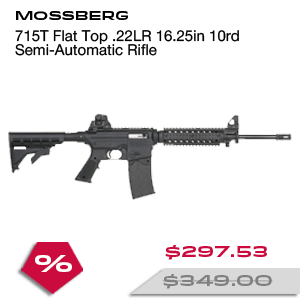
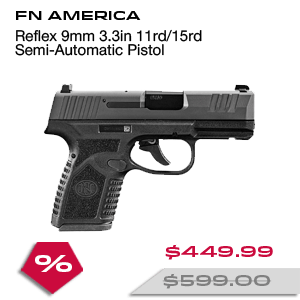
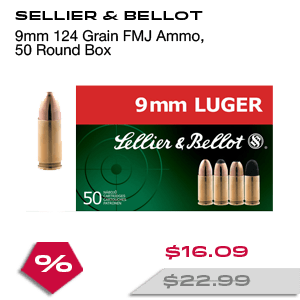

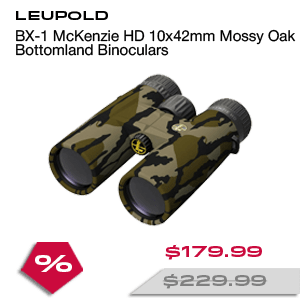
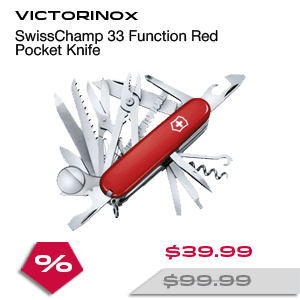




Leave a Reply